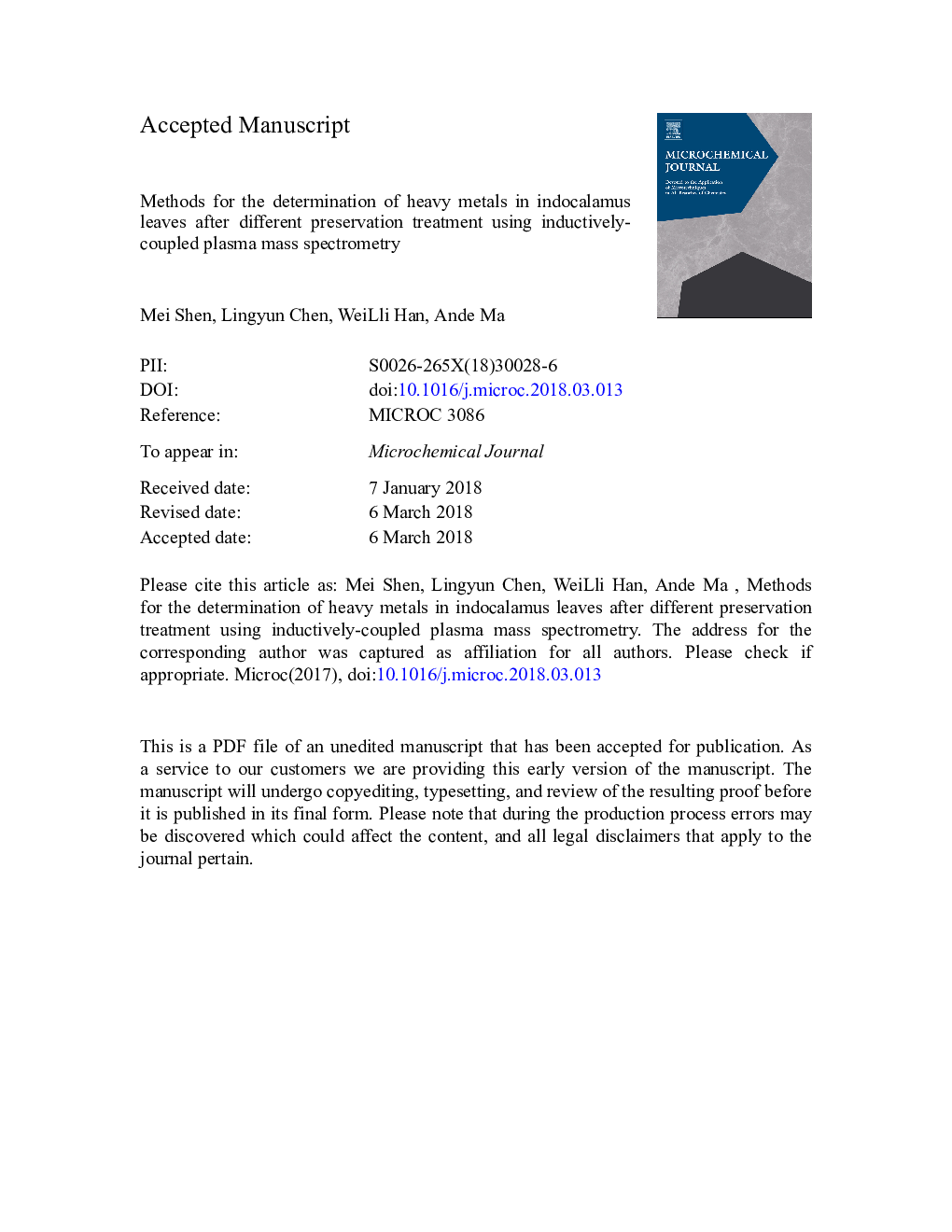| Article ID | Journal | Published Year | Pages | File Type |
|---|---|---|---|---|
| 7640808 | Microchemical Journal | 2018 | 25 Pages |
Abstract
The microwave digestion method was used to determine the concentrations of Cu, Mn, Pb, Cr, Cd, and Hg in indocalamus leaves by inductively-coupled plasma mass spectrometry (ICP-MS) and collision/reaction cell technology after different methods of preservation. Two digestion methods, HNO3-H2O2 and HNO3-HF, were used to digest and quantify weighed indocalamus leaves. The standard addition method was used to compare the two digestion methods' influence on the determination of heavy metal concentrations. The accuracy of the method was successfully validated using two standard reference materials, tea leaves (GBW 08513) and peach leaves (SRM 1547), through recovery experiments using standard addition. The results suggested that correlation coefficients of standard curve of the ten tested elements were between 0.9975-0.9999. The Instrument Detection Limit (IDL) was between 0.003 ng·Lâ1-0.516 ng·mLâ1, the Method Detection Limit (MDL) was between 12.0 ng·gâ1-96.0 ng·gâ1, and the recovery rates of both methods were 80-115%. Both digestion methods had a high accuracy and a high recovery rate. HNO3-HF resulted in more complete digestion, and thus more accurate results. Both dry and wet preservation methods decreased the concentrations of Mn, Pb, Cr, and Cd in indocalamus leaves. The wet-preserved indocalamus leaves had an abnormally high concentration of Cu. Therefore, people should choose natural or dry-preserved indocalamus leaves.
Keywords
Related Topics
Physical Sciences and Engineering
Chemistry
Analytical Chemistry
Authors
Mei Shen, Lingyun Chen, WeiLli Han, Ande Ma,
